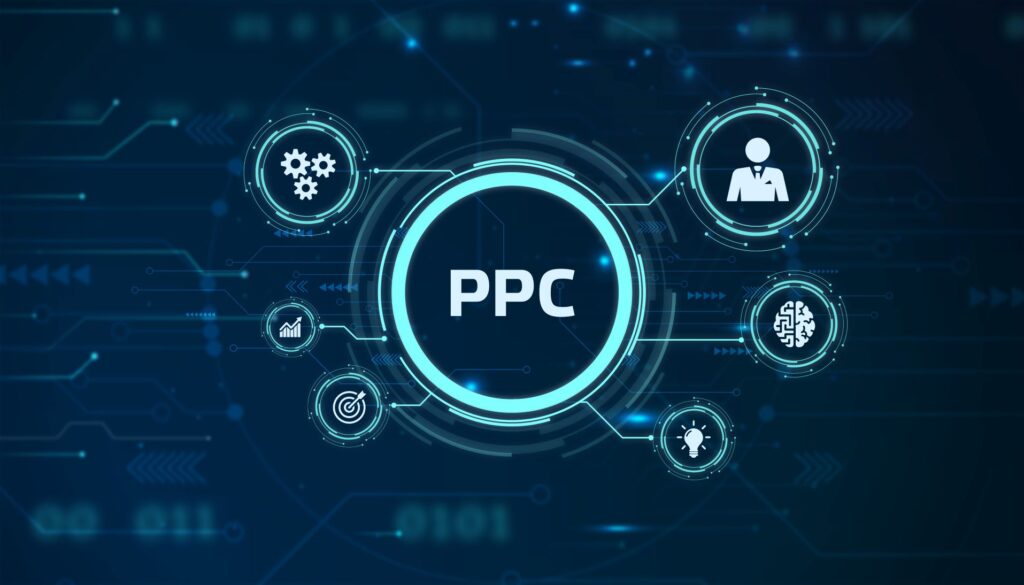If you are looking to add PPC marketing to your advertising arsenal, it is important that you choose the best model for your company. Although each avenue, as well as the PPC process itself, can be explained in simple terms, expertise and careful attention are required if you want to come out on top.
The ABCs of PPC
Pay-per-click advertising starts off exactly as it sounds: You pay a fee to the publisher (usually Google) every time someone clicks on your ad— Then, it gets a little more complicated.
To choose the correct model and maintain optimal visibility for the lowest price possible, it is important to understand the following elements:
- Campaign: a company’s overall approach to advertising with PPC
- Ad Group: a conglomerate of ads pertaining to a particular goal, product, audience, or topic within a campaign
- Keywords: commonly searched words to which an ad group is relevant
- Landing Page: a page that users who click on an ad are directed to, or ‘land on’
- Ad Copy: text within an ad and landing page, usually written by a professional copywriter, containing certain keywords
- More Than Keywords — Keys to PPC Success
To maintain a cost-effective campaign and capture clicks, it is crucial to pay attention to these aspects:
- Relevance: When people make a search that includes your chosen keywords, will your ad peak enough interest to warrant their click? Will your landing page fulfill their query?
- Quality: Will Google determine your ad content to be of high caliber? Does it support a good consumer experience? Does your copy contain a clear call to action?
- Overall Structure: Have you built up a sound overall structure for your campaign, ensuring each part is collaborative and clear? Are you being steered towards your goals?
Google and other publishers will especially take these aspects into consideration if you choose a bid-based model, giving you a Quality Score that will affect your visibility and costs.
The 2 Main Models of Pay-Per-Click
Now that we have gone over what it takes to create a cost-effective PPC marketing campaign, let’s take a look at the two main models you can choose from. Which approach will work best for your company’s agenda?
The Flat-Rate Model
- The publisher sets distinct rates for different areas of their site when a certain search is run.
- The advertiser chooses a suitable spot with an affordable price and relevant keywords, paying the publisher a fixed fee for every click.
- Publishers may sometimes be open to barter—especially if the advertiser is offering a long contract or one of high value.The Bid-Based Model
- The advertiser makes a bid for an ad spot associated with certain keywords—the maximum amount they are willing to pay to come up first within search results.
- The publisher holds an automated auction any time the keywords bid on are used in a search, summoning the ad spot to the searcher’s screen.
- The auction process takes both Quality Score and the amount of money bid into consideration when choosing a winner.
- A pay-per-click rate under the stated maximum is set for the winner of the ad spot. This rate is also affected by their Quality Score.Your Best Avenue — Ask Gravitate One for Assistance
Although relevance, quality, and a sound campaign structure are always necessary to capture clicks, a bid-based approach to pay-per-click marketing requires extra care.
If you are willing to put in the work, a bid-based model is likely to result in a much higher bottom line. On the other hand, if you would like to take a more simple, fixed approach, a fixed-rate model can lead to sustainable success as well.
Although PPC advertising follows a relatively simple structure, it is primarily based on what publishers and consumers consider to be relevant and engaging.
Gravitate One can take care of your PPC campaign for you, so you can sit back and watch the clicks roll in from Google and other search sites. We channel vast expertise and experience in the world of marketing into our work, tending to a client’s online presence as if it were a garden, ultimately helping it grow to its highest potential.
